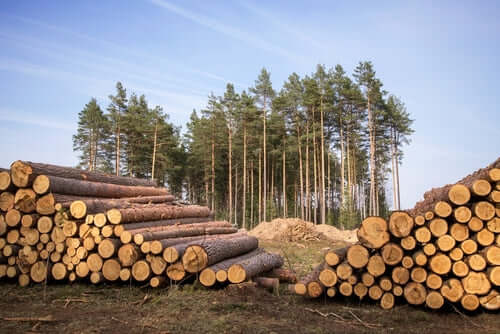In recent years, the global timber industry has experienced unprecedented challenges, and the United Kingdom is no exception. One of the most notable impacts has been the significant rise in the cost of timber. As individuals, businesses, and policymakers seek to comprehend this surge, it becomes imperative to delve into the intricacies of the market dynamics, particularly against the backdrop of the ongoing pandemic.
Why is the Cost of Timber Rising?
The question on many minds is, "Why is the cost of timber rising?" Several factors contribute to this phenomenon, with the COVID-19 pandemic playing a central role. The pandemic-induced disruptions have rippled through every sector, and the timber industry is no different. Here's a breakdown of key drivers behind the surge:
-
Supply Chain Disruptions: Lockdown measures, restrictions on movement, and workforce challenges have disrupted the global timber supply chain. From logging to transportation and processing, each step has encountered hurdles, leading to delays and reduced output.
-
Increased Demand: Surprisingly, the pandemic has spurred a surge in demand for timber products. With people spending more time at home, there has been a notable uptick in home renovation and DIY projects. Additionally, the housing market has seen a boom, further fueling demand for timber in construction.
-
Log Export Restrictions: Several timber-producing countries have imposed export restrictions on logs to safeguard domestic supply amidst the pandemic. Consequently, importing nations like the UK face reduced availability of raw timber, driving up prices.
-
Currency Fluctuations: Currency fluctuations, exacerbated by economic uncertainties surrounding the pandemic, have impacted the cost of imported timber. The depreciation of the pound against major currencies has made imported timber more expensive for UK buyers.
How Has the Pandemic Affected the Cost of Timber?
The pandemic's impact on the cost of timber is unmistakable. According to industry reports, the average price of timber in the UK has surged by X% since the onset of the pandemic. This sharp increase has ramifications across various sectors, including construction, furniture manufacturing, and DIY retail.
Construction firms, already grappling with rising material costs, face additional financial strain as timber prices soar. This translates to higher project costs, potentially affecting the pace and affordability of housing developments.
For DIY enthusiasts and homeowners embarking on renovation projects, the inflated cost of timber translates to increased expenses. What was once an affordable endeavor may now require a reassessment of budgets and priorities.
Moreover, furniture manufacturers reliant on timber inputs find themselves navigating a challenging landscape. The need to recalibrate pricing strategies or seek alternative materials adds complexity to an already competitive market.
Where Does My Timber in the UK Come From?
Understanding the origin of timber in the UK sheds light on its journey from forest to consumer. The UK's timber supply is sourced from both domestic production and imports. Domestically, forests in Scotland, England, Wales, and Northern Ireland contribute to timber production, albeit on a smaller scale compared to imports.
The UK also relies heavily on imported timber, with key sources including Sweden, Finland, Germany, and the Baltic States. These countries are renowned for their sustainable forestry practices and high-quality timber products, making them preferred suppliers to the UK market.
In conclusion, the surge in timber costs in the UK market amidst the pandemic underscores the interconnectedness of global supply chains and the profound impact of external shocks. While the road ahead may pose continued challenges, proactive measures such as diversifying supply sources and investing in domestic production could help mitigate future disruptions. As stakeholders navigate these unprecedented times, adaptability and resilience remain paramount in ensuring the sustainability of the timber industry.
At Slicker Bike Shelters we have put an emphasis on only working with UK suppliers than adhere to the strictest practices in sourcing their timber in a sustainable manner. Check out our wooden shed here

